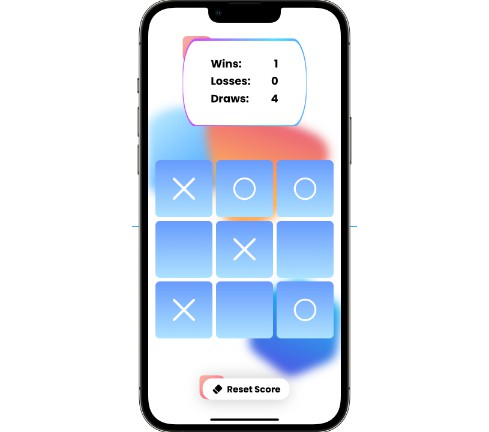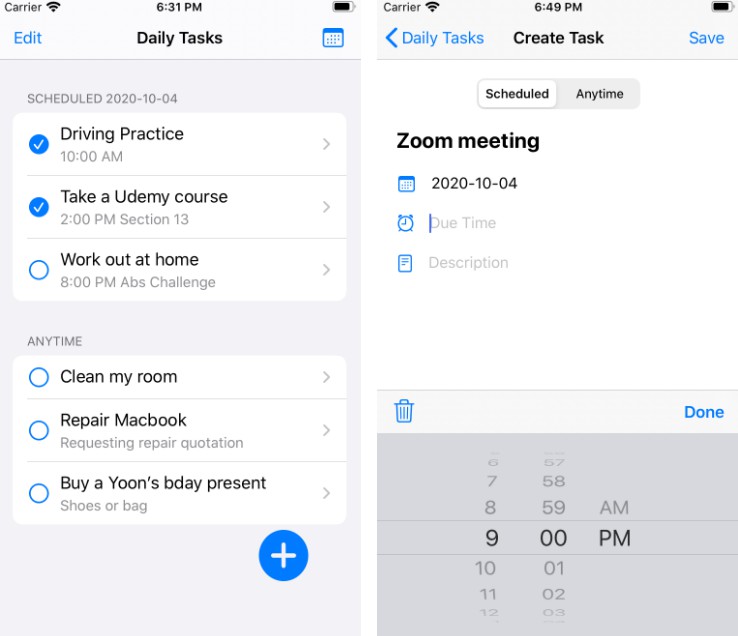Swift MVVM + Protocol Oriented Programming
This sample demonstrates an approach to MVVM based on protocol oriented programming. This means that instead of having a whole view-model defined in one place, we instead break it up in protocols, each with its implementation of what would be a single exposed method of the view-model, and which i’ll be naming then as features from now on.
This technique helps maximize the separation of concerns in the business logic layer, and maximize its reusability. Each view-model is a composition of features, and each feature can be part of N view-models. This maximizes testability, as we don’t really need to test the view-models directly, because they will only declare initialization code, we focus our test efforts in the features declarations, and any view-model that uses that feature will receive an already tested method. It’s a plug and play approach for view-models methods.
Disclaimer, here we use closures to make the communication between controller and view-model, but the proposed approach should no be affect by whatever technique you pick.
How features are declared
// 1. Declare the protocol that defines the feature (more about those "Has" protocols in a brief)
protocol FeatureOne: HasServiceOne & HasServiceTwo {}
// 2. Declare the protocol extension with the feature (ideally only one by protocol)
extension FeatureOne {
func featureOne(completion: @escaping (Result<Void, Error>) -> Void) {
serviceOne.oneServiceCall(completion: completion)
}
}
In a normal MVVM the featureOne method would be implemented inside a single view-model, which would kill reusability of the method in other parts of the code, and possibly lead to massive view models that contains many methods implementations. This is solved by the features composition, as it break up the view model in tiny parts that has single responsibilities and maximum reusability.
The features you declare may be dependent of other components, in the example above, serviceOne is a depency for the featureOne to work. To make ServiceOne visible to the feature in question we declare through protocol inheritance that FeatureOne inherit from HasServiceOne, which is a protocol defined in the ServiceOne.swift file, and declares that whoever implements/inherits from it needs to declare a serviceOne property. The ServiceOne.swift file would look like this:
// ServiceOne.swift
protocol HasServiceOne {
var serviceOne: ServiceOneProtocol { get }
}
protocol ServiceOneProtocol {
func oneServiceCall(completion: (Result<Void, Error>) -> Void)
}
final class ServiceOne: ServiceOneProtocol {
func oneServiceCall(completion: (Result<Void, Error>) -> Void) {
// call service and run the completion with the result
}
}
All dependencies to non architectural components (not view-models, coordinators, controllers, presenters, interactors, routers, etc) should be declared via “Has” protocols, like analytics (HasAnalytics), dispatch queue (HasMainQueue, HasBackgroundQueue, HasXQueue), feature flags/toggles (HasFeatureFlag/HasFeatureToggle), application (HasApplication), device (HasDevice), etc.
Features should never have dependencies on architectural components as this would couple the features to specific screen architecture and go against the reusability purpose of this approach. But dependencies between archtectural components can be kept as you may prefer. Check out bellow how the view model is injected in the controller in the “How controllers are declared” section of this README for a simple example.
How view-models are declared
// 1. Declare which features compose the view-model
typealias ViewModelFeatures = FeatureOne &
FeatureTwo
// 2. Declare the view-model concrete type
final class ViewModel: ViewModelFeatures {
// 3. Dependencies needed by FeatureOne and FeatureTwo
let serviceOne: ServiceOneProtocol
let serviceTwo: ServiceTwoProtocol
// 4. Dependency Injection
init(
serviceOne: ServiceOneProtocol,
serviceTwo: ServiceTwoProtocol
) {
self.serviceOne = serviceOne
self.serviceTwo = serviceTwo
}
}
Check how we don’t need to declare any business logic in our view-model directly! As stated before, this is because our view-model is a composition of features, and only need to declare how the dependecies for those features are managed, and nothing else. How you manage the dependecies, simple or fancy, is up to you.
Also I would even consider making the view-model a struct, as it will make it even easier to be declared, just be sure you know the behinds the scenes and the consequences of these decision. If you don’t, look up the diferences between struct and classes, there is plenty of content in the internet. Following is an example of the ViewModel being implemented as a struct, as you see, it is shorter because we don’t need to declare an initilizer, as structs have implicit ones based on its properties.
typealias ViewModelFeatures = FeatureOne &
FeatureTwo
struct ViewModel: ViewModelFeatures {
let serviceOne: ServiceOneProtocol
let serviceTwo: ServiceTwoProtocol
}
How controllers are declared
Not much to add here, just basic and simple view controller with the view-model being injected throught the typealias that make the feature composition, that is declared in the same file as the view-model. This gives the controller visibility to the features that a view-model has and enable then to be used by the controller.
final class ViewController: UIViewController {
private let viewModel: ViewModelFeatures
init(viewModel: ViewModelFeatures) {
self.viewModel = viewModel
super.init(nibName: nil, bundle: nil)
}
required init?(coder: NSCoder) {
fatalError("init(coder:) has not been implemented")
}
}
How to unit test
As stated before, we will focus unit tests directly to our features instead of the view-models. If we test all the features correctly our view-models will also be tested.
The main difference for testing the features is that we can’t actually instantiate a feature to run tests because it is a protocol, and not a concrete type. To solve that, we can implement a simple struct that implements the feature to be tested in a specific test case. I recommend to declare this struct within the namespace of the test case itself, this helps not flooding autocompletion suggestions of your project and help to keep things contained in their context.
Here follows how a test case would look like (full implementation in the source code):
final class FeatureOneTestCase: XCTestCase {
struct Sut: FeatureOne {
let serviceOne: ServiceOneProtocol
}
private let serviceOneStub = ServiceOneStub()
private lazy var sut = Sut(serviceOne: serviceOneStub)
// Tests implentations goes here...
}
For sake of completeness, here is the implementation of ServiceOneStub. If you are not familiar with stubs, take a look on what test doubles are.
final class ServiceOneStub: ServiceOneProtocol {
var response: Result<Void, Error> = .success(())
func oneServiceCall(completion: (Result<Void, Error>) -> Void) {
completion(response)
}
}

